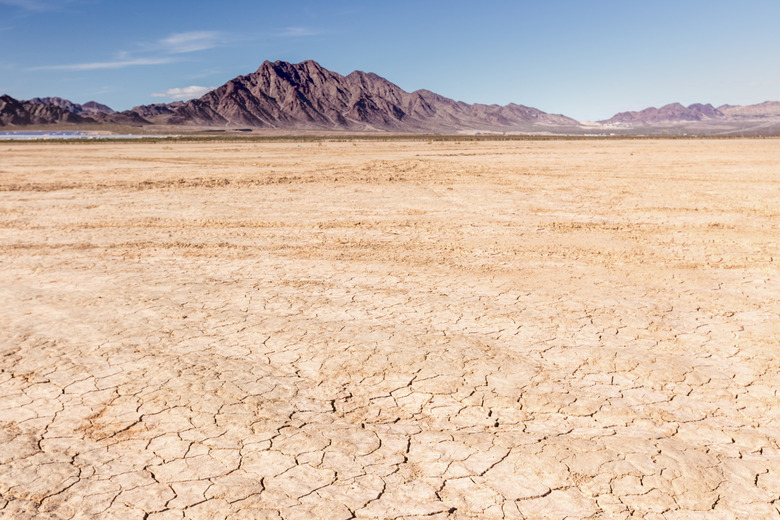Characteristics Of A Dry Climate
Deserts and steppes comprise the regions that are characterized by dry climates. These are arid and semiarid areas that have three main characteristics: very low precipitation, high evaporation rates that typically exceed precipitation and wide temperature swings both daily and seasonally. Dry climates are found throughout the globe, particularly in western North America, Australia, southern South America, central and southern Africa and much of Asia.
Precipitation
Precipitation
Low and unpredictable precipitation is the primary characteristic of a dry climate. The lowest rainfall occurs in arid, or desert, areas where precipitation averages less than 35 cm (14 inches) per year, and some deserts have years with no rainfall at all. Semiarid, or steppe, regions are comprised of grasslands characterized by short grasses and scattered small bushes or sagebrush. They receive slightly more rainfall than deserts and can receive up to 70 cm (28 inches) per year. However, most semiarid regions have less than 50 cm (20 inches) of average annual precipitation.
Evaporation
Evaporation
Another characteristic of a dry climate is that evaporation is often greater than precipitation. This results in a climate that lacks ground moisture due to the low average rainfall and rapid evaporation of the precipitation that does fall. For example, arid regions in the Middle East average less than 20 cm of rainfall per year, but annual evaporation rates of more than 200 cm can be ten times that of precipitation. The extreme evaporation contributes to dry, coarse soils that support little plant life. Semi-arid regions with slightly more precipitation will support some grass and small bushes.
Temperature
Temperature
A third common characteristic of dry climates are wide variances in seasonal and daily temperatures. Deserts are usually found in the rain shadows of mountain ranges and have hot summers, cool nights and moderate winters. However, in cold deserts, winters can be extremely frigid. In dry climates, the sun's rays are more direct, due to the lack of humidity, and this results in extreme daily temperature swings. Desert highs can approach 40 degrees Celsius (104 Fahrenheit) or more, and in some areas, winter lows can drop well below freezing.
Dry Regions
Dry Regions
Arid and semi-arid regions together make up 26 percent of the land area of Earth, and deserts comprise 12 percent of the land. The great deserts of the world are found in the Sahara in North Africa, the Chihuahua and Sonoran deserts of Mexico and the southwestern United States, and the Gobi desert in Asia. The largest semiarid regions in the world are found in the great steppes of Russia and the short-grass plains and sagebrush areas of the North American Plains and Great Basin, as well as the Pampas of South America.
Cite This Article
MLA
Peterson, John. "Characteristics Of A Dry Climate" sciencing.com, https://www.sciencing.com/characteristics-dry-climate-4878/. 13 March 2018.
APA
Peterson, John. (2018, March 13). Characteristics Of A Dry Climate. sciencing.com. Retrieved from https://www.sciencing.com/characteristics-dry-climate-4878/
Chicago
Peterson, John. Characteristics Of A Dry Climate last modified March 24, 2022. https://www.sciencing.com/characteristics-dry-climate-4878/
